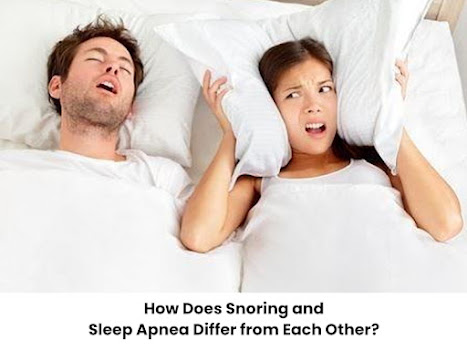How Does Snoring and Sleep Apnea Differ from Each Other?
Snoring
Snoring is the noise produced when air flows past relaxed tissues in the throat during sleep. It is a common occurrence and can affect people of all ages, although it is more common in certain groups, such as older adults and individuals who are overweight.
Signs
- Loud, repetitive sounds during sleep
- Usually harmless, but can disrupt sleep for the snorer and their partner
- Typically not associated with pauses in breathing or oxygen desaturation
- Blocked nasal airways due to congestion or allergies
- Consumption of alcohol or sedatives before bedtime
- Relaxation of throat muscles during sleep
- Sleeping position, such as sleeping on one's back
- Lifestyle modifications, including weight loss and avoiding alcohol
- Changing sleep position
- Nasal strips or dilators to improve airflow
- Continuous Positive Airway Pressure (CPAP) devices for severe cases
Sleep apnea is a disorder resulting in shallow or disrupted breathing during sleep. These pauses, known as apneas, can occur multiple times per hour and may last for several seconds to minutes. If left untreated, sleep apnea can impact sleep quality and overall health.
- Pauses in breathing during sleep are often accompanied by gasping or choking
- Excessive daytime sleepiness
- Loud snoring (not in all)
- Continuous Positive Airway Pressure (CPAP) therapy, which uses a machine to deliver a stream of air through a mask to keep the airway open during sleep
- Oral appliances to reposition the jaw and tongue to prevent airway obstruction
- Lifestyle changes, such as weight loss and avoiding alcohol before bedtime
- Surgery to remove excess tissue in the throat or reposition the jaw (in severe cases)
While snoring and sleep apnea may share similarities, they are distinct conditions with different underlying causes and treatment approaches. If you or a loved one experiences symptoms of either condition, it is essential to consult with ENT specialists in Thakurpukur for proper diagnosis and management.




Comments
Post a Comment